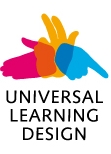Detail příspěvku
Searching-by-Hearing: Sonification of the Search Engine WhatsOnWeb through a User Experience Design Process
Maria Laura Mele
ECoNA – Interuniversity Centre for Research on Cognitive Processing in Natural and Artificial Systems, Sapienza University of Rome
Stefano Federici
ECoNA/Department of Human and Education Sciences, University of Perugia
Simone Borsci
Department of Human and Education Sciences, University of Perugia
Abstrakt
|
In order to represent the information usually conveyed through visual interfaces, information representation research has increasingly centred its attention on the development of non-visual ways to transmit spatial data by means of sonification, namely “the transformation of data relations into perceived relations in an acoustic signal for the purposes of facilitating communication or interpretation” (Krameret al. 1997, p.3). In the present work we applied the Action by Design Component (ADC) sonification model (Zhao, Shneiderman, and Plaisant 2007) to the sonification of the visual Web search clustering engine WhatsOnWeb (WoW) (Di Giacomoet al. 2007; Di Giacomoet al. 2008). WoW is a search engine based on sophisticated graphic visualisation algorithms which conveys the information dataset by means of both semantic correlations and semantic clusters through graph-drawing methods. By following a user-centred approach, we developed and analysed three combinations between visual and auditory features, in this way, we obtained three sonification layouts, (PanAndPitch, VolumeAndPitch and BlinkAndPitch)transmitting both global and particular spatial information through sound events. A usability evaluation of the visual and the sonificated layouts has finally been carried out, with blind and sighted users. The results show similar levels of efficacy, efficiency and satisfaction for both information and presentation modalities. The usability index emerging from the performance evaluation of the two analysed groups seems to be homogeneous, therefore suggesting that the sonification of visual information makes visual content learnable for blind people in a comparable way to a sighted person learning from a purely visual environment.
|
Pro plný text, prezentaci a videozáznam se prosím přihlašte.









